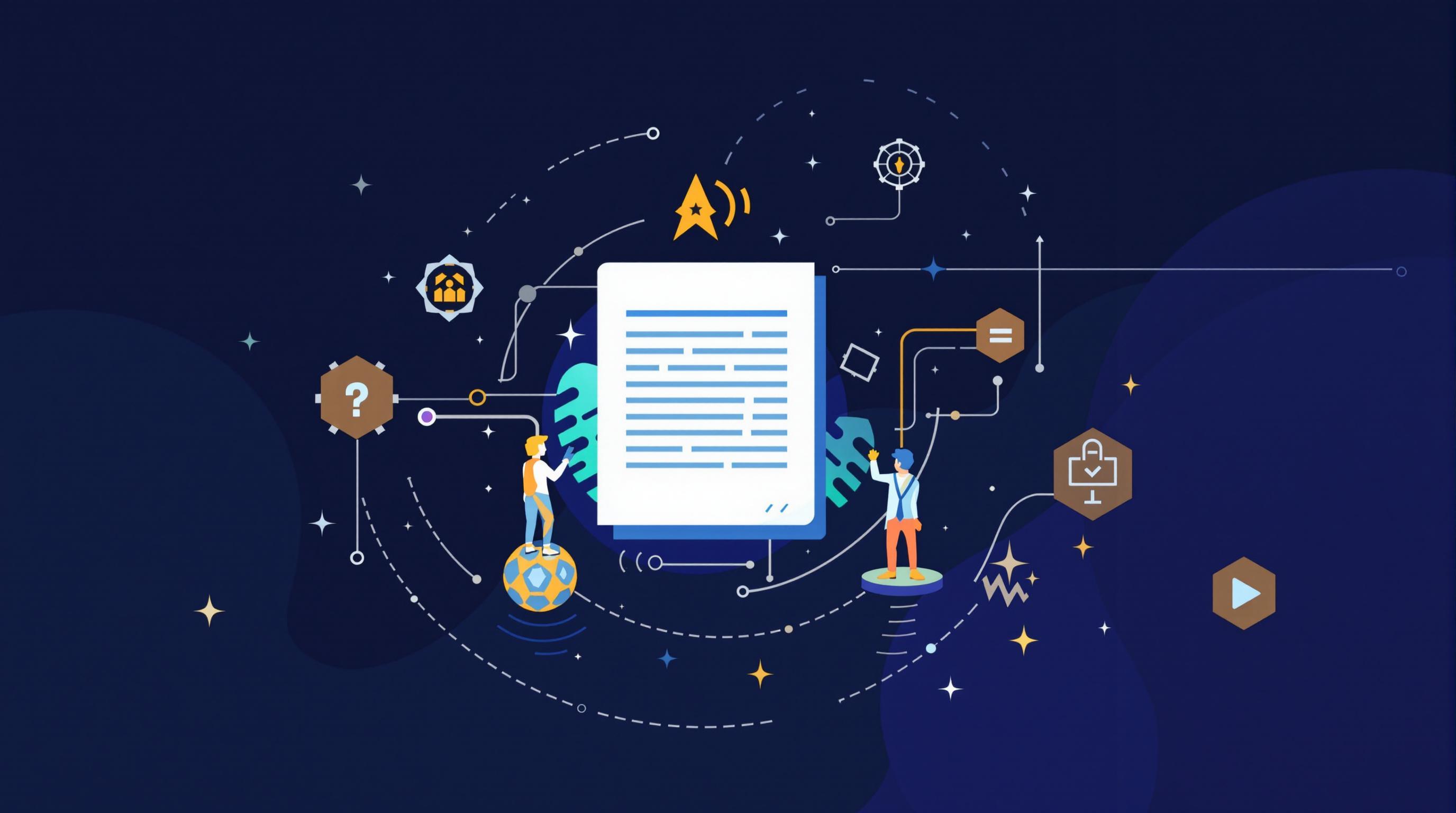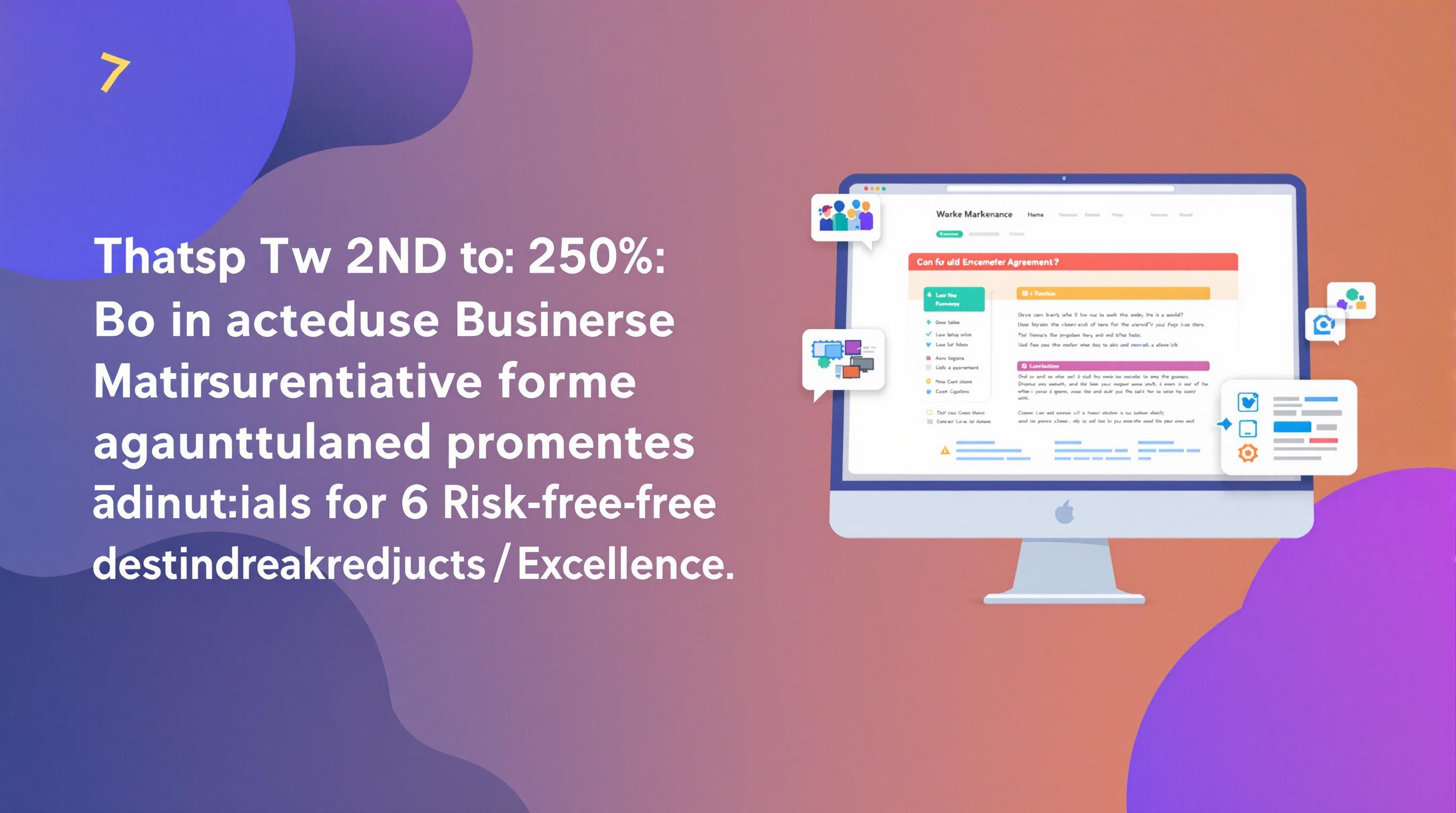Related Articles
- The Role of Cultural Norms and Social Pressure in Shaping Corporate Tax Behaviors Across Borders
- Top 6 Game-Changing HR Analytics Platforms Since 2019 Revolutionizing Employee Rights Enforcement
- The Unexpected Impact of Cultural Appropriation on Copyright Claims and Creative Ownership Debates
- Unveiling the Role of AI in Detecting Counterfeit Trademarks Before Official Approval
- The Quiet Impact of Cultural Nuances on Negotiation Dynamics in Global Business Agreements
- The Hidden Role of Psychometric Profiling in Choosing Co-Founders for Startup Success
6 Futuristic Contract Elements Shaping Next-Gen Business Agreements You Didn’t Know You Needed
6 Futuristic Contract Elements Shaping Next-Gen Business Agreements You Didn’t Know You Needed
6 Futuristic Contract Elements Shaping Next-Gen Business Agreements You Didn’t Know You Needed
1. Smart Contracts Powered by Blockchain
Smart contracts utilize blockchain technology to automate contract execution, ensuring that terms are fulfilled precisely and transparently. By embedding code directly into agreements, they eliminate intermediaries and reduce the likelihood of human error or fraud.
These blockchain-based contracts execute automatically when certain conditions are met, streamlining transactions like payments, deliveries, or compliance checks. The immutability and traceability afforded by blockchain also provide enhanced trustworthiness and auditability for all parties involved.
As the cornerstone of decentralized finance and digital asset management, smart contracts are revolutionizing industries from real estate to supply chain management, marking a dramatic shift toward more efficient and secure business dealings (Nakamoto, 2008).
2. AI-Enhanced Contract Review and Analysis
Artificial intelligence (AI) tools are increasingly incorporated into contract management, offering rapid review and intelligent analysis of legal documents. These systems identify potential risks, inconsistencies, and compliance issues that might be missed by human reviewers.
AI algorithms can learn from past contracts and legal databases, enabling them to suggest improved clauses or flag non-standard terms automatically. This not only accelerates the drafting process but also helps organizations maintain higher standards of contract quality.
Applications like Kira Systems and LawGeex demonstrate how AI-driven contract review significantly reduces turnaround times and mitigates costly errors, making it an indispensable element for futuristic agreements (LawGeex, 2020).
3. Dynamic Pricing and Terms Adjustment
Next-generation contracts incorporate mechanisms for dynamic pricing, allowing terms to adjust automatically based on predefined market conditions or performance metrics. This ensures flexibility and fairness in an ever-changing economic environment.
For example, supply contracts might include clauses where prices fluctuate with raw material costs, or service agreements might modify fees based on customer satisfaction ratings or operational efficiency.
Such adaptive contract provisions foster resilience and responsiveness, helping businesses manage uncertainty and optimize collaboration outcomes over contract lifecycles (Harvard Business Review, 2019).
4. Embedded Data Privacy and Security Protocols
Given the growing importance of data protection regulations like GDPR and CCPA, futuristic contracts now embed explicit provisions to safeguard sensitive information. These clauses define handling procedures, breach notifications, and data usage limitations in clear terms.
This heightened attention to privacy helps mitigate legal risks and builds trust between contracting parties, particularly as data becomes an increasingly valuable business asset.
Moreover, integrating cybersecurity standards within contracts ensures that all parties adhere to protocols that protect against unauthorized access, reflecting a proactive approach to modern digital risks (European Commission, 2018).
5. Multi-Party and Cross-Jurisdiction Integration
Modern contracts often involve multiple parties across different countries and legal systems. Next-gen agreements are designed to facilitate seamless integration among these diverse stakeholders while harmonizing conflicting regulations.
This involves leveraging international arbitration clauses, choice-of-law provisions, and modular contract architecture that adapts to jurisdiction-specific requirements without compromising core terms.
Such sophistication ensures enforceability and smooth dispute resolution in complex global transactions, empowering businesses to operate confidently on an international scale (UNCITRAL, 2017).
6. Environmental, Social, and Governance (ESG) Clauses
As sustainable business practices become central, contracts increasingly incorporate ESG criteria, requiring parties to commit to environmental stewardship, social responsibility, and ethical governance.
These provisions may mandate carbon footprint reductions, fair labor practices, or transparent reporting obligations, aligning contractual obligations with corporate sustainability goals.
Embedding ESG elements elevates contracts from mere transactional documents to instruments of impactful corporate citizenship, reflecting a broader cultural and regulatory shift toward sustainability (World Economic Forum, 2020).
7. Real-Time Contract Performance Monitoring
Futuristic agreements integrate IoT devices and software analytics to monitor contract performance metrics in real time. This continuous oversight allows stakeholders to proactively address compliance deviations or service level breaches.
By gathering live data on deliveries, quality checks, or usage statistics, automated alerts can trigger corrective actions or invoke penalty clauses without waiting for formal audits.
This capability enhances transparency and accountability throughout the contract lifecycle, enabling agile responses to operational challenges and reinforcing trust among partners (Gartner, 2021).
8. Customized User Interfaces for Contract Interaction
Next-generation contracts often come with bespoke digital platforms or dashboards, empowering users to engage interactively with agreement contents. These interfaces simplify clause navigation, signature workflows, and status tracking.
By translating complex legal language into intuitive formats and providing real-time collaboration tools, customized UIs lower barriers to understanding and negotiating terms effectively.
This user-centric approach democratizes contract management, making it accessible beyond legal teams and fostering better communication among all parties involved (McKinsey & Company, 2022).
9. Automated Renewal and Termination Mechanisms
To reduce administrative burden and minimize oversight errors, futuristic contracts incorporate automated triggers for renewal or termination events. These mechanisms use data inputs and predefined criteria to initiate or end agreements accordingly.
For example, subscription services can automatically renew based on usage thresholds or customer confirmations, while termination clauses might activate after non-compliance detection.
Such automation ensures accuracy and timeliness, safeguarding business continuity, and preventing unintended lapses or disputes (Forbes, 2023).
10. Integration with Decentralized Identity Systems
Emerging digital identity frameworks allow individuals and organizations to manage credentials securely and prove identities without intermediaries. Contracts linked to these decentralized identity systems enable trustless verification of parties involved.
This integration provides enhanced identity assurance, reducing fraud risk and simplifying onboarding by verifying licenses, certifications, or reputations through cryptographic proofs.
As the concept of self-sovereign identity gains traction, embedding these capabilities in contracts represents a forward-thinking approach to validating and authenticating contractual actors (World Economic Forum, 2021).




